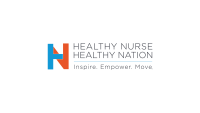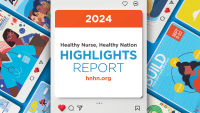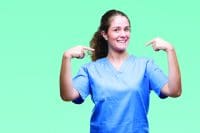In October, ANA’s Board of Directors adopted a HealthyNurse™ definition and related constructs, which will guide ANA’s HealthyNurse program and associated initiatives. In developing the definition and constructs, ANA consulted with health and wellness experts, including the Healthy Nurse Subgroup of the American Academy of Nursing Expert Panel on Health Behaviors. Invaluable insight was also provided by ANA’s constituent and state nurses associations and organizational affiliates who participated in the Department of Health, Safety, and Wellness’ monthly teleconferences.
Five constructs of the HealthyNurse™
|
ANA defines a HealthyNurse as one who actively focuses on creating and maintaining a balance and synergy of physical, intellectual, emotional, social, spiritual, personal and professional wellbeing. A healthy nurse lives life to the fullest capacity, across the wellness /illness continuum, to become stronger role models, advocates, and educators, personally, for their families, their communities and work environments, and ultimately for their patients. The constructs further advise nurses that adherence to each of these constructs enhances the healthy nurse’s full capacity to care. Nurses whose practice is characterized by the HealthyNurse constructs can function to their highest potential, personally and professionally.
ANA recognizes that a healthy nurse need not be perfect, but operate at his or her own unique peak level of wellness. This will enhance the provision of optimal care for their patients. Healthy nurses should experience higher levels of compassion, satisfaction, be more resilient in their daily activities, and generally feel more appreciated, valued, and respected by those around them. A healthy nurse feels confident, motivated, and able to adapt to challenge and change.
To learn more visit anahealthynurse.org for valuable resources. Additionally, participate in ANA’s HealthyNurse Health Risk Appraisal to identify some of your health, safety, and wellness risk factors and peruse our new web wellness portal at http://anahra.org. As a registered nurse, you will be able to compare your HRA results to national averages and ideal standards. By building this nurse-specific personal and occupational health risk aggregated database, you will also be able to compare your results to those of other registered nurses within specific demographics. You will then be directed to tools and resources on major health topics in the interactive web wellness portal. This project is being conducted in collaboration with Pfizer Incorporated.
ANA wishes you a happy, healthy, enjoyable 2014!
Holly Carpenter is the senior staff specialist in the Department for Health, Safety and Wellness at ANA.

















